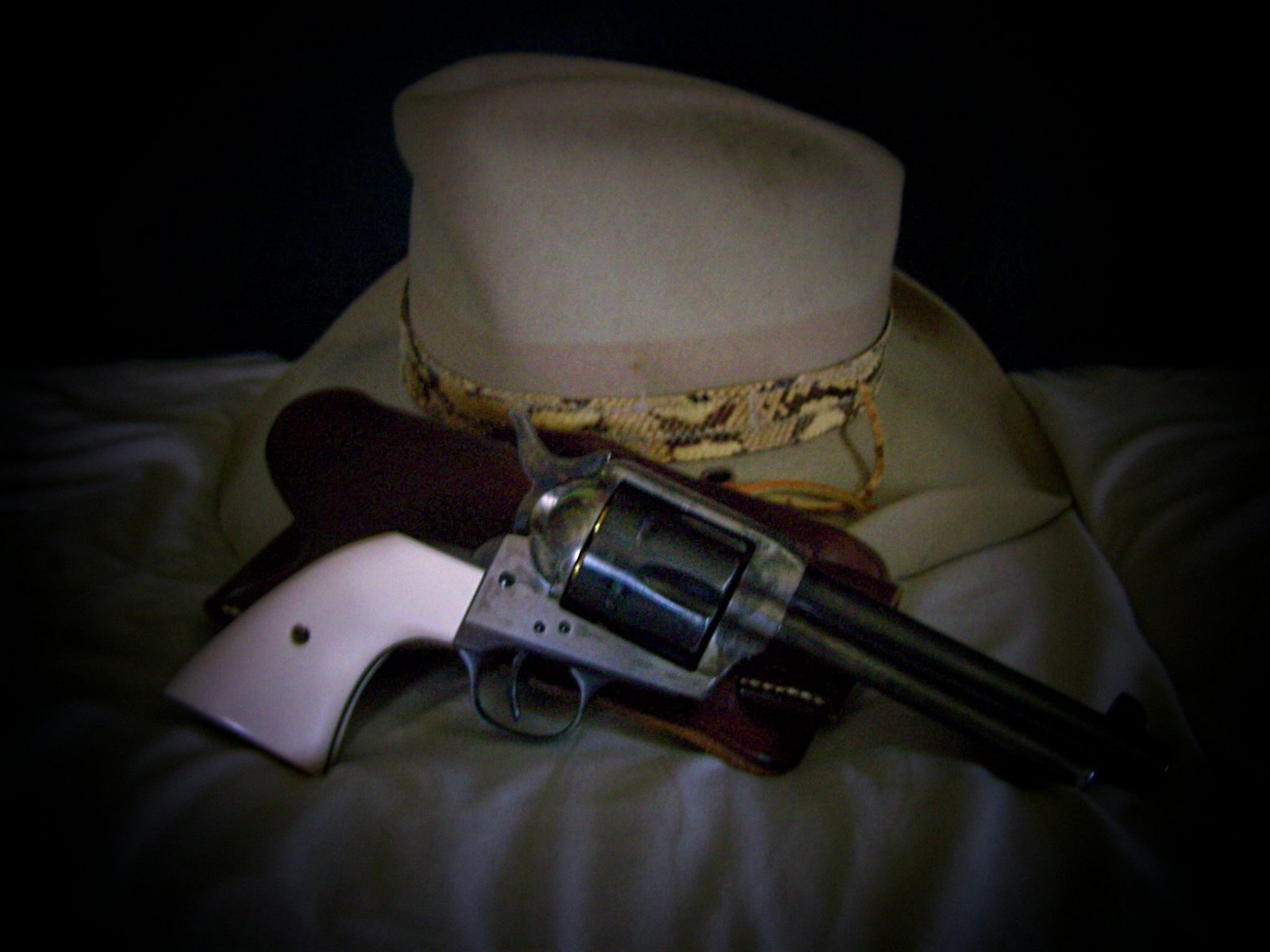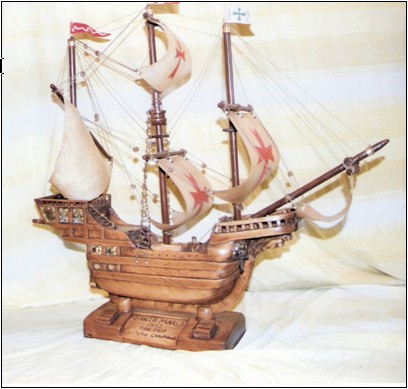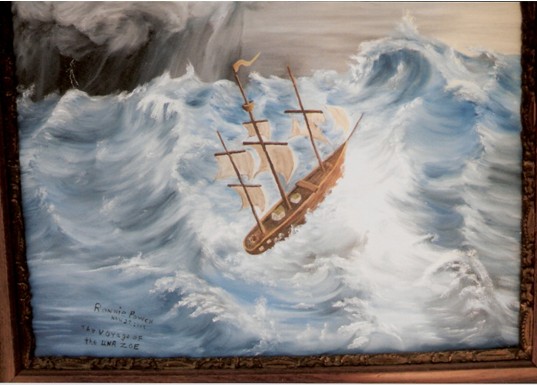
A Time to Remember
An Unforgettable Christmas
By Ronnie Powell
World War Two had begun taking an even more dreadful toll in human lives by autumn of 1944 and Father in anticipation of being called to arms decided the family should move to the farm they had recently purchased from Grandmother Carrie Powell. The 120 acre farm located on the south bank of the Dousinberry Creek near Long Lane, Missouri, and my birthplace would become home to me for many years to come. Father would remain in Kansas City to await the outcome of draft or not and continue working in the defense plant where he was employed at the time.
The journey to the farm began at day break on a cold November morning a couple of weeks later with Father, my twin brother Donnie and me in the cab of a snub nosed Chevy truck van. Mother, Grandmother Carrie Powell and baby Richard followed in the family car. The exit from the city to the farm nearly two hundred miles would become a grueling twelve hour drive through the one of the worst blizzards I have encountered.
Nightfall had prevailed by the time we reached the old homestead house sitting on the north face of Brushy Ridge. The two story dwelling had been left vacant since the passing of Grandfather Powell and in a state of disrepair and cloaked in a heavy blanket of snow. The front door stood opening and a covering of snow lay across the parlor floor. The structure stood without heat, lights and water. A huge potbellied stove inside was quickly loaded with dry wood from a shed out back and soon the cold began retreating from the house. It was as if the old structure awakened and began creaking and groaning from within. We all pitched in and unloaded our possessions. Extra sheets and blankets were hung over the doors and windows to keep out the wind and blowing snow.
It was imperative that Father return to the city and began the journey back alone around midnight, leaving us to fend for ourselves. I alone, at age nine considered it all a wonderful adventure, but for Mother it must have been a frightful and trying experience.
Eight days later Father returned in a borrowed automobile with much needed food supplies and a four day furlough and set about chopping stove wood, making minor repairs and installing a rope and bucket over the well. A jersey cow, named Peggy joined the family along with a few hens and a rooster. But all too soon it was again time for him to return to the city with no assurance when he would return, not even for Christmas.
The winter that year was very harsh with more snow and subzero temperatures. Money was extremely scarce added to the sparse living condition and if not for Peggy the cow we would have had to do without milk. Thanksgiving came and went a rather dismal affair. Grandmother Carrie sacrificed one of the hens for Thanksgiving dinner and the results were chicken and dumplings, biscuits and gravy.
Life went on of course and each day Donnie and I trekked off to Brushy Ridge School, with shoes wrapped in burlap wearing two heavy sweaters and socks for gloves. The old one room building stood in the center of a clearing with rather large windows down each side. A huge wood burning stove kept the room quite comfortable. I was assigned a desk near the south wall at one of the windows. Shelves on each side of the window contained the school’s entire library of about forty books. It was there I discovered Penrod and Sam, Robin Hood, Call of the Wild and a few more of the classic.
With Christmas looming closer we began wondering whether Father would come home or not. A small cedar tree was cut and erected in the parlor and decorated with tinsel and a few ornaments. Grandmother Carrie assured us there would be gifts under the tree when Christmas Morning arrived.
The view from the house to Dousinberry Creek extended to well over a mile and I sat by a window on Christmas Eve watching the road in anticipation of seeing Father cross the bridge. Time wore on and by late afternoon I had all but given up on him returning for the event and then I caught the sun glinting off the windshield of an automobile as it approached the bridge and I yelled for in my heart I knew it was Father. A few moments later the vehicle pulled into the driveway and he stepped out, a returning hero to me.
I rushed outside well ahead of everyone. He began handing us wonderful things. A ham for Christmas dinner, store bought bread and a huge bag of candy were among the items. I managed a quick look inside the car, saw no wrapped gifts, but wasn’t too disappointed, for after all Father was there at last to share the holiday with us.
The aroma of Ham baking in the oven awakened my brothers and me the next morning. I was certain there would at least be few gifts under the tree and I hurried down stairs. To my surprise I saw three distinct separate piles of gifts lying under the tree and upon closer scrutiny found one pile bearing my name.
I waited impatiently while the family gathered around, sitting beside the pile of gifts. When the word was given to open the packages I began with up most urgency. First to be opened was a bundle of assorted colors of construction paper. The next package a gift from Grandmother consisted of a brightly colored toy celluloid car. The last gift a very large one wrapped in heavy brown paper intrigued me the most. What I saw when the last of the wrapping was tore away took my breath, for lying there on the floor was a red mackinaw coat, matching stocking cap, mittens and rubber galoshes.
I quickly donned the garments and went out on the front porch and sat down. It was very cold but I sat there truly warm inside and out on that wonderful Christmas morning. Adios.
An Unforgettable Christmas
By Ronnie Powell
World War Two had begun taking an even more dreadful toll in human lives by autumn of 1944 and Father in anticipation of being called to arms decided the family should move to the farm they had recently purchased from Grandmother Carrie Powell. The 120 acre farm located on the south bank of the Dousinberry Creek near Long Lane, Missouri, and my birthplace would become home to me for many years to come. Father would remain in Kansas City to await the outcome of draft or not and continue working in the defense plant where he was employed at the time.
The journey to the farm began at day break on a cold November morning a couple of weeks later with Father, my twin brother Donnie and me in the cab of a snub nosed Chevy truck van. Mother, Grandmother Carrie Powell and baby Richard followed in the family car. The exit from the city to the farm nearly two hundred miles would become a grueling twelve hour drive through the one of the worst blizzards I have encountered.
Nightfall had prevailed by the time we reached the old homestead house sitting on the north face of Brushy Ridge. The two story dwelling had been left vacant since the passing of Grandfather Powell and in a state of disrepair and cloaked in a heavy blanket of snow. The front door stood opening and a covering of snow lay across the parlor floor. The structure stood without heat, lights and water. A huge potbellied stove inside was quickly loaded with dry wood from a shed out back and soon the cold began retreating from the house. It was as if the old structure awakened and began creaking and groaning from within. We all pitched in and unloaded our possessions. Extra sheets and blankets were hung over the doors and windows to keep out the wind and blowing snow.
It was imperative that Father return to the city and began the journey back alone around midnight, leaving us to fend for ourselves. I alone, at age nine considered it all a wonderful adventure, but for Mother it must have been a frightful and trying experience.
Eight days later Father returned in a borrowed automobile with much needed food supplies and a four day furlough and set about chopping stove wood, making minor repairs and installing a rope and bucket over the well. A jersey cow, named Peggy joined the family along with a few hens and a rooster. But all too soon it was again time for him to return to the city with no assurance when he would return, not even for Christmas.
The winter that year was very harsh with more snow and subzero temperatures. Money was extremely scarce added to the sparse living condition and if not for Peggy the cow we would have had to do without milk. Thanksgiving came and went a rather dismal affair. Grandmother Carrie sacrificed one of the hens for Thanksgiving dinner and the results were chicken and dumplings, biscuits and gravy.
Life went on of course and each day Donnie and I trekked off to Brushy Ridge School, with shoes wrapped in burlap wearing two heavy sweaters and socks for gloves. The old one room building stood in the center of a clearing with rather large windows down each side. A huge wood burning stove kept the room quite comfortable. I was assigned a desk near the south wall at one of the windows. Shelves on each side of the window contained the school’s entire library of about forty books. It was there I discovered Penrod and Sam, Robin Hood, Call of the Wild and a few more of the classic.
With Christmas looming closer we began wondering whether Father would come home or not. A small cedar tree was cut and erected in the parlor and decorated with tinsel and a few ornaments. Grandmother Carrie assured us there would be gifts under the tree when Christmas Morning arrived.
The view from the house to Dousinberry Creek extended to well over a mile and I sat by a window on Christmas Eve watching the road in anticipation of seeing Father cross the bridge. Time wore on and by late afternoon I had all but given up on him returning for the event and then I caught the sun glinting off the windshield of an automobile as it approached the bridge and I yelled for in my heart I knew it was Father. A few moments later the vehicle pulled into the driveway and he stepped out, a returning hero to me.
I rushed outside well ahead of everyone. He began handing us wonderful things. A ham for Christmas dinner, store bought bread and a huge bag of candy were among the items. I managed a quick look inside the car, saw no wrapped gifts, but wasn’t too disappointed, for after all Father was there at last to share the holiday with us.
The aroma of Ham baking in the oven awakened my brothers and me the next morning. I was certain there would at least be few gifts under the tree and I hurried down stairs. To my surprise I saw three distinct separate piles of gifts lying under the tree and upon closer scrutiny found one pile bearing my name.
I waited impatiently while the family gathered around, sitting beside the pile of gifts. When the word was given to open the packages I began with up most urgency. First to be opened was a bundle of assorted colors of construction paper. The next package a gift from Grandmother consisted of a brightly colored toy celluloid car. The last gift a very large one wrapped in heavy brown paper intrigued me the most. What I saw when the last of the wrapping was tore away took my breath, for lying there on the floor was a red mackinaw coat, matching stocking cap, mittens and rubber galoshes.
I quickly donned the garments and went out on the front porch and sat down. It was very cold but I sat there truly warm inside and out on that wonderful Christmas morning. Adios.
































